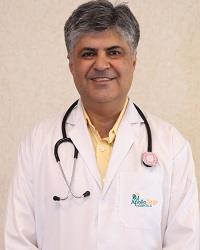Search Result: 3

Registration No
1512040
Language
English, العَرَبِيَّة

4 years experience overall

Nashik , Nashik
MON- SAT(09:00 AM-05:30 PM)

Dr Siddharth Deshpande
MBBS, DOMS
Registration No
574342
Language
English, हिंदी, मराठी

0 years experience overall

Mumbai Agra Road , Nashik
MON- SAT(05:00 PM-06:00 PM)

Dr Vivek Thakare
MBBS, DOMS
Registration No
574346
Language
English, हिंदी, मराठी

0 years experience overall

Mumbai Agra Road , Nashik
WED | THU- SAT(05:45 PM-06:00 PM | 05:00 PM-06:00 PM)
Frequently Asked Questions for s in
There is no specific stage at which cataract removal becomes necessary. The choice to get surgery is based on the impact of cataracts on your daily activities and quality of life. Your ophthalmologist will assess your situation and recommend the best time for surgery.
Signs of infection after cataract surgery include increased eye redness, pain, swelling, discharge, or worsening vision. If you experience any of these symptoms, contacting your doctor is essential, as prompt treatment is necessary to prevent complications and preserve vision.
Nuclear cataracts, which occur in the centre of the lens, are often considered more difficult to remove compared to other types. However, advancements in surgical techniques and technology have made it possible to remove all kinds of cataracts with high success rates.
Cystoid macular oedema (CME) is a potential complication of cataract surgery. It occurs when there is an accumulation of fluid in the macula, the retina’s central part, which is also responsible for sharp vision. CME can cause blurry vision and may require additional treatment to resolve.
Cataract surgery has a high success rate of over 95%. Most people experience improved vision and a significant reduction in symptoms after surgery. Individual outcomes, however, could differ depending on factors such as overall eye health, the severity of cataracts, and any pre-existing eye conditions. Success rate of cataract surgery may vary depending on the type of intraocular lens (IOL) used and the presence of other eye conditions.
No, cataracts cannot come back after they have been surgically removed. However, some patients may develop a condition called posterior capsule opacification (PCO), which can cause similar symptoms. PCO can occur months or years after cataract surgery and that it affects about 10 to 20% of patients. A simple laser operation can readily treat PCO.
Generally, cataract surgery is safe; however, like any surgical procedure, it carries some risks. Possible side effects include infection, bleeding, inflammation, increased eye pressure, or swelling of the retina. These complications are rare and can usually be managed with proper care.
Vision usually improves after cataract surgery, but in some cases, vision may temporarily worsen due to swelling or inflammation. This problem is usually temporary and resolves with time and proper post-operative care. In rare cases, vision can deteriorate due to complications that must be addressed promptly.
Cataracts most commonly develop due to ageing. Other elements that may play a role in their development include prolonged exposure to sunlight without protection, smoking, certain medications such as corticosteroids, diabetes, eye injuries or surgeries, and genetic factors.
Cataracts can be successfully treated with both conventional and laser-assisted cataract surgery. The choice depends on factors such as the patient’s needs, the surgeon’s expertise, and the availability of technology. Your physician will suggest the best course of action.
A thorough examination of the eyes is necessary to identify cataracts. Your ophthalmologist will evaluate your symptoms, perform a visual acuity test, dilate your pupils to examine your lens, and use other tests such as tonometry to measure eye pressure.
You should see a doctor if you experience symptoms that include fuzzy or blurry eyesight, trouble seeing at night, sensitivity to light, or seeing halos around lights. Regular eye check-ups are also crucial for the early detection of eye problems.
The medical professional who treats cataracts is an ophthalmologist, a specialist in eye care. They have the necessary training and expertise to perform cataract surgery and manage possible complications.
While it’s not possible to prevent cataracts entirely, there are measures you can take to delay their development. These include protecting your eyes from UV radiation with sunglasses, quitting smoking, eating a healthy diet rich in antioxidants, and managing other health conditions like diabetes.
Surgery is the only proven cure for cataracts. The clouded lens is removed during surgery and substituted with an intraocular lens (IOL), an artificial lens. This procedure is safe and restores clear vision in most cases.
Related Procedures in Nashik
Related Treatments in Nashik
- Doctors for Blepharitis Treatment in Nashik
- Doctors for Cataracts Treatment in Nashik
- Doctors for Color Blindness Treatment in Nashik
- Doctors for Glaucoma Treatment in Nashik
- Doctors for Keratoconus Treatment in Nashik
- Doctors for Pink Eye Conjunctivitis Treatment in Nashik
- Doctors for Retinal Detachment Treatment in Nashik
- Doctors for Retinitis Pigmentosa Treatment in Nashik
- Doctors for Strabismus Treatment in Nashik
- Doctors for Uveitis Treatment in Nashik
Other Specialities in Nashik
- Best Urologist in Nashik
- Best Pulmonologist in Nashik
- Best General Physician in Nashik
- Best Endocrinologist in Nashik
- Best Cardiologist in Nashik
- Best Oncologist in Nashik
- Best Radiologist in Nashik
- Best Orthopedics in Nashik
- Best Hepatologist in Nashik
- Best Gynecologist in Nashik
- Best Dermatologist in Nashik
- Best Gastroenterologist in Nashik
- Best Psychologist in Nashik
- Best Ent Specialist in Nashik
- Best Nephrologist in Nashik
- Best Rheumatologist in Nashik
- Best Diabetologist in Nashik
- Best Psychiatrist in Nashik
- Best Neonatologist in Nashik
- Best Dentist in Nashik
- Best Dietitian in Nashik
- Best Haematologist in Nashik
- Best Pediatrics in Nashik
- Best General Surgeon in Nashik
Top Hospitals in India
- Hospitals in Ahmedabad
- Hospitals in Bangalore
- Hospitals in Bhubaneswar
- Hospitals in Bilaspur
- Hospitals in Chennai
- Hospitals in Delhi
- Hospitals in Guwahati
- Hospitals in Hyderabad
- Hospitals in Indore
- Hospitals in Kolkata
- Hospitals in Madurai
- Hospitals in Mumbai
- Hospitals in Mysore
- Hospitals in Nashik
- Hospitals in Noida
- Hospitals in Visakhapatnam
- Hospitals in Lucknow
- Hospitals in Bhopal
- Hospitals in Karur
- Hospitals in Kochi
- Hospitals in Nellore
- Hospitals in Trichy
- Hospitals in Kakinada
© Copyright 2024. Apollo Hospitals Group. All Rights Reserved.
 +91 8069991061
Book Appointment
+91 8069991061
Book Appointment






 Call Now
Call Now


